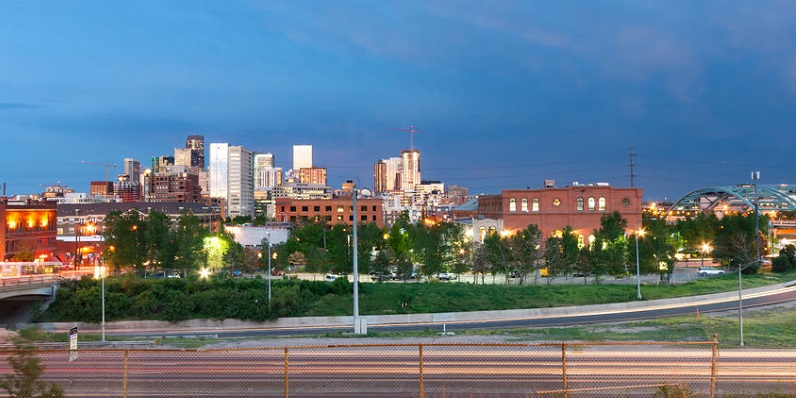Connected-vehicle and smart road technology could eventually prevent 439,000 to 615,000 U.S. auto accidents per year.
Connected-Vehicle Tech to Ease Traffic, Prevent Auto Accidents
The Denver City Council is getting smart about solving problems plaguing city streets. On January 16, the council approved a $12 million program to use new technology to improve pedestrian safety and untangle traffic.
The program will test ideas and tech to connect pedestrians, freight trucks, and city public works trucks to a smart grid, Jon Murray of The Denver Post reported. The program, which revives concepts from the city’s entry in the federal Smart City Challenge, will focus on neighborhoods most afflicted by traffic woes.
Connected-vehicles technology hasn’t seen mainstream usage in the United States but has won enthusiastic support from government safety officials, traffic engineers, and automakers. It would use short-range radio signals to connect vehicles on the road with one another and the road itself. The vehicles and road would exchange information such as positions and relative speeds to avoid auto accidents. The road’s computer system would tie in the vehicles’ information and its own arrays of sensors and cameras to adjust street signs and coordinate traffic flow.
One industry journal estimates that once fully deployed across the United States, the systems could prevent 439,000 to 615,000 accidents and save as many as 1,300 lives per year.
Although the systems’ full potential will take many years to realize, Denver city officials hope at least to create the foundation for it, The Post reported. The Denver program, which is receiving joint financing from the federal government, will run for four years.
It will experiment with three pieces of the traffic puzzle:
Connected Freight
The city will install communication devices on delivery trucks and semis operated by participating companies. The system will use the devices to track the trucks’ locations and reroute them from neighborhood streets to arterial boulevards. Then, in turn, it could prioritize traffic signals to speed up the truck routes. Planners want to focus on north Denver’s Globeville and Elyria Swansea neighborhoods, where freight trucks often travel on their way to industrial sites.
Connected Citizens
The program will install pedestrian-detection systems at test intersections to improve pedestrian safety. The systems will alert drivers in connected vehicles when pedestrians are in the roadway and may even allow longer crossing times for walkers with special needs.
Connected Fleet
Planners envision placing communication devices in as many as 1,500 city-owned vehicles to transmit reports on traffic conditions to the city’s transportation management center.
The somewhat narrow focus will better prepare the city’s traffic and data experts to integrate and interpret a flood of wireless signals in the future, Nancy Kuhn, Denver Department of Public Works spokeswoman, told The Post. The signals will multiply as automakers begin embracing the new technology and smart infrastructure tools are developed. Public and private engineers are testing this type of smart tech near East 61st Avenue and Peña Boulevard in conjunction with Panasonic’s Peña Station Next development.
Denver needs to make the best use of its limited roadway space, Kuhn told Denver’s KMGH TV reporter Jennifer Kovaleski.
Kuhn said:
“We’re just at the beginning stages of the links, but there’s so many applications. … Four years from now, we hope to have had some consistent testing of equipment that allows us to make our streets safer, allows us to reduce congestion, allows people to travel more efficiently because they have more data in front of them and they know what’s happening in the street before them and can make good decisions about their commutes.”

